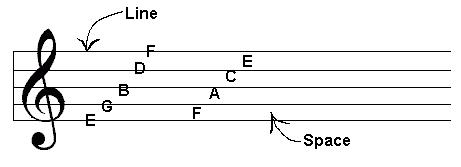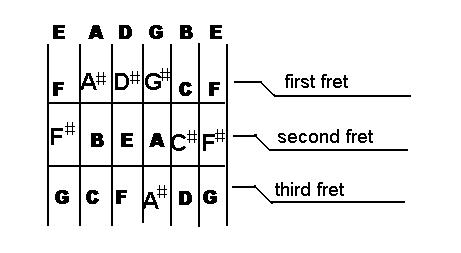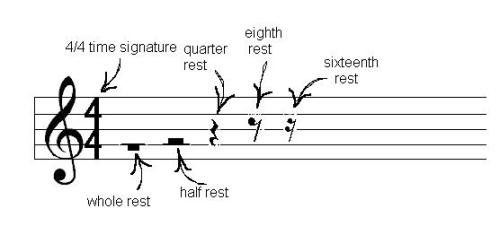How To Read Basic Manuscript
[You must read the first lesson before you go onto this lesson:]
How To Read Tablature
Okay, first of all, let's get this straight. Guitar manuscript isn't the same as for other instruments. Stringed instruments, maybe, but most likely only if there are 6 strings and they're all supposed to have the same standard tuning as a guitar (EADGBE). This lesson will teach you how to read manuscript for guitar, which is very useful if you want to start a serious band, as many serious musicians are able to read manuscript and find it conveniant to have a guitar player that can read manuscript as well.
How To Tune Your Guitar
(Without using any other tuning device other than your ears and a piano, although I really would suggest getting a tuner, because youre ears aren't always reliable if you've just started playing guitar, but you'll get the hang of it)
I'm thinkin that I really should have put this in the first lesson, but it must have slipped my mind...so it's here now, and that's all that matters! :)
<b>Step 1. Using a piano, tune the high E string to the first E above middle C...if you don't have a piano, you can either get someone to help you, or you can just assume that the high E string is in tune and tune the rest of the strings to the low E string...
Step 2. Press the B (second) string down at the
fifth fret and tune it (by moving the tuning pegs) until it sounds exactly the same as the high E (first) string when it's open. [
Dumbed down version] In other words, play the high E string open, and the B string at the 5th fret while moving the peg that's connected to the B string until both strings sound the same. DO NOT tune the peg for the high E string unless you know for sure that it is out of tune, which is very unlikely, since the first step was to tune it!
Step 3. Press the G (third) string down at the
fourth fret and tune it until it sounds exactly the same as the open B string.
Step 4. Press the D (fourth) string at the
fifth fret and tune it until it sounds exactly the same as the open G string.
Step 4. Press the A (fifth) string at the
fifth fret and tune it until it sounds exactly the same as the open D string.
Step 5. Press the low E (sixth) string at the
fifth fret and tune it until it sounds exactly the same as the open A string.
Your guitar should now be in tune. You might want to double check it with a tuner, if you have one. They're always a BIG help!
The Staff
The music staff is divided into 5 lines and 4 spaces, and each individual note and space has its own note (look at the picture to see which line/space has which note).

The order of notes on the music scale goes as follows:
A A# B C C# D D# E F F# G G# A
It is very important to memorize this!!
As you can see in this picture:

each fret has it's own note. These correspond with the notes in manuscript.
For example, if you wanted to play a C note, you could do so by playing the low or high E string at the 8th fret, the A string at the 3rd fret, the D string at the 10th fret, the G string at the 5th fret, or the B string at the 1st fret. There are also many other places to play a C note on the guitar, but that would take too long :)
Next up on the agenda-how long do you know how to play a note?
This is the reason why manuscript is better than TAB. Tab tells you how to play a note, but not for how long to play it. Manuscript tells you all of this.
To read manuscript and be able to play it, you have to know the time signature of the piece of music you want to play (you know, the little numbers at the left that look kind of like a fraction). The number at the top of the time signature tells you how many beats there are in a measure, and the bottom number tells you what kind of note gets one beat. The most common time signature is 4/4, or four beats per measure with a quarter note (1/4 is one quarter, hence the name "quarter note", if you didn't know already) receiving one beat. A time signature of 3/4 means that there are 3 beats per measure with a quarter note getting one beat, 3/2 means that there are 3 beats per measure and a half note gets one beat, and so on.
If you do not know what a quarter, whole, half, eighth, sixteenth, etc. note is, please ask me and I will tell you. It would take too long for me to explain here.
Here are the different types of rests (along with an example of a time signature):

A
whole rest is held for four beats, a
half rest is held for two beats, a
quarter rest is held for one beat, an
eighth rest is held for half a beat, and a
sixteenth rest is held for a sixteenth of a beat (don't worry, sixteenth rests aren't used all that often!).
Okay, I think that's all you need to know about manuscript...i
f there's something else you think I should have added, please tell me!! Stumble!
Stumble!

